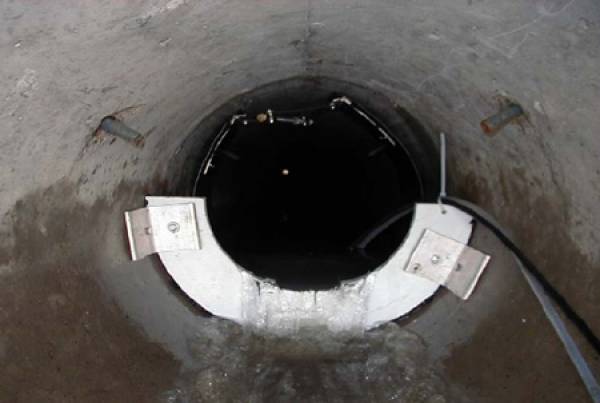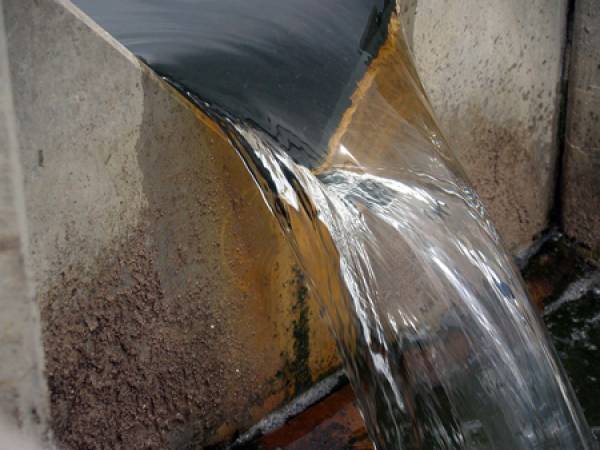This website uses a variety of cookies, which you consent to if you continue to use this site. You can read our Privacy Policy for
details about how these cookies are used, and to grant or withdraw your consent for certain types of cookies.
Compound Weirs
In situations where flow rates are expected to vary widely, the use of a compound weir may be an appropriate solution. A compound weir commonly consists of two stages, a rectangular notch with a 90º V-notch cut into the center of the crest, but it does not exclusively have to be so. V-notch, rectangular, and Cipoletti weirs have all been used in a variety of sizes, combinations, and number of stages.

A drawback to the use of the standard two-stage compound weir is when the discharge begins to exceed the capacity of the V-notch. Here thin sheets of water begin to pass over the horizontal crest of the rectangular notch in an irregular fashion – causing a discontinuity in the discharge curve.
To minimize the impact, the traditional approach has been to tailor the size and angle of the V-notch so that the zone of transition occurs where the discharge measurements will be of minimum importance.
Another approach to minimizing the discontinuity is to use a different compound geometry. Piratheepan et al have investigated double V-notch compounded weirs where lower a V-notch is cut into the center of the crest of an upper V-notch. Lower notch angles investigated were 60º and 90º. Upper notch angles were 90º, 120º, and 150º. The goal of the double V-notch investigation was to minimize the discontinuity experienced in the more common rectangular notch with V-notch.
Limited laboratory testing by Villemonte with 1-foot deep 90º V-notches cut into 2, 4, and 6-foot rectangular notches has resulted in the development of an equation for the combination investigated of:

Overall, the discharge over compound weirs has not been fully investigated either in the laboratory or the field. To ensure accurate flow measurement, therefore, compound weirs should be calibrated in the laboratory or field if the configuration has not been previously investigated.
Image: Pacific Southwest Research Station
Sources: Piratheepan, M., Winston, N., and Patirana, K., Discharge Measurements in Open Channels Using Compound Sharp-Crested Weirs, Journal of the Institution of Engineers, Sri Lanka, No. 03, 2006, Water Measurement Manual, Third Edition, U.S. Department of the Interior, Bureau of Reclamation, 1997
Related Blog Posts
Explore more insights in our blog.

LOCATIONS IN ATLANTA, GA & BOISE, ID




